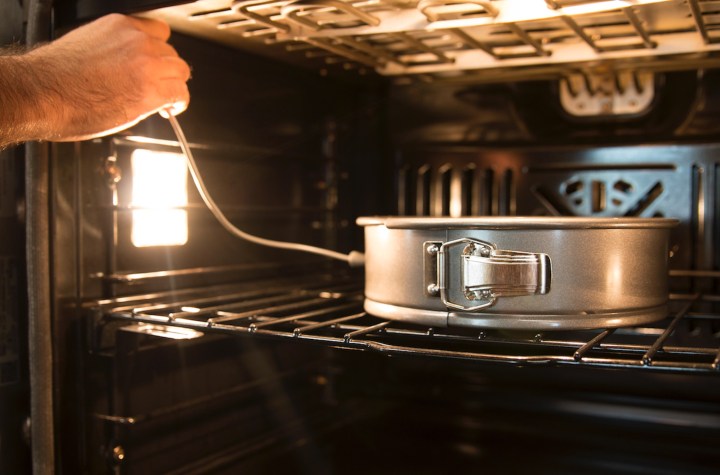
“Right now, we have a Precision Bakeware cake pan prototype, and have successfully tested it on cheesecake and other cakes — and the results have been delicious,” said Chris Naber, product developer at FirstBuild. “We’re also looking at how we can expand the line for bread, pies, quiches, and other popular baked goods. This will truly take the guesswork out of baking, and is ideal for anyone from pastry chefs to first-time cakemakers.”
FirstBuild was at the Smart Kitchen Summit in Seattle this week to announce the new products. There are smart pans, ovens, and grills, but this is one of the few pieces of the connected kitchen focused on baking. A removable sensor monitors the food temperature and communicates with the oven and your phone. The catch is that the bakeware will only work with connected GE Appliance ovens.
The company wasn’t saying a lot about how the pans work, but users will have some control over how crispy the edges of their baked goods get.
“Doneness is a very subjective measure,” Larry Portaro, director of FirstBuild, told Digital Trends. “We are excited for our owners to be able to have input into what they consider the ideal doneness for the foods that they are baking. We plan to characterize doneness as a function of user-specified characteristics such as texture, moisture level, and appearance.”
Bakers can use their own recipes, but GE Appliances FirstBuild will provide some as well. Pricing isn’t available yet, but the line will be available on FirstBuild’s website in 2018.
Editors' Recommendations
- The new Ring Intercom lets you buzz folks into your building from afar
- This smart mug literally glows to let you know how hot it is
- GE-backed startup brings crystal-clear ice to fans of bourbon and other spirits


